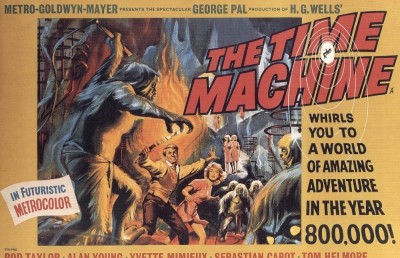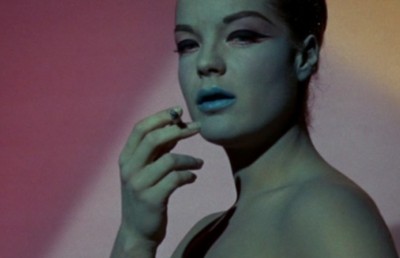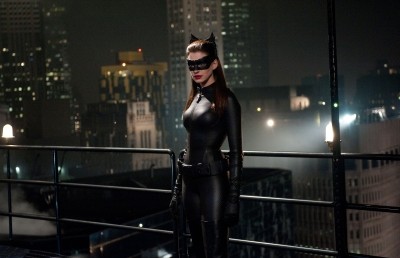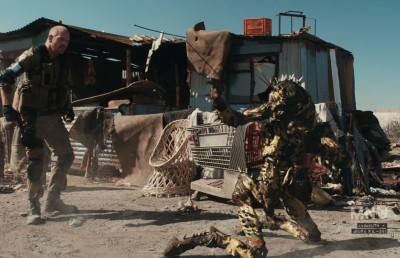Film Editing and the Establishment of Instability in La Jetée
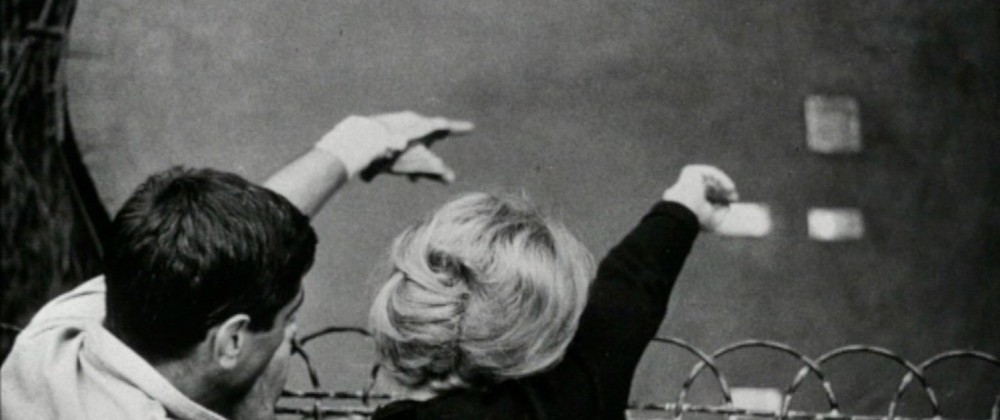
The world portrayed in Chris Marker’s seminal science fiction film La Jetée (1962) is characterized by instability on a variety of levels. Indeed, the background setting and context for this science fiction film is post nuclear holocaust earth; humanity has already realized what may be the greatest threat to its own continuation and stability. This was a possibility which, at the time of the film’s release in the developing years of the cold war, was beginning to seem a possibility which need not be confined to the realms of fantastic fiction (note, for example, the Cuban Missile Crisis of the same year, 1962). With the diegetic world’s surface reduced to a radioactive wasteland, people have taken refuge below ground, where they engage in maniacal efforts to save humanity through time travel facilitated by people with strong mental images of their past. The theme of madness and psychological instability looms large. Given the film’s unique formal properties –except for one brief shot, it is composed entirely of still images– editing is a key stylistic and thematic element of the film. This essay will examine how elements of the film’s editing serve to destabilize and comment on three areas:
1) the viewer’s sense of the main character’s mental state
2) the relations between the doctors and the main character, and
3) the protagonist’s subjective world of mental images and memory
Early on in the film two sequences are repeated, with a number of identical images presented in a similar order. The repetition is an attempt to relay to the viewer the main character’s mental state. Upon our first entry to the underworld, the photographs show us a series of images in which the camp leaders are crowded around a man lying on a hammock with a pair of wired goggles attached to his face. Rather than explaining these images, the voice over addresses the aftermath of the war and leaves these images ambiguous. In the next sequence, however, the voice over and images are complimentary as we see and hear that the experiments can lead to madness. Shortly following these two sequences, after we have been introduced to the latest subject of the camp doctors, we see for a second time the series of images of the man in the hammock, only this time the voice over tells us the nature of the experiments. The images appear in exactly the same order with the exception of those images which have been removed from the previous section. In the first sequence of the experimentation we see two shots –a close up of the man with goggles and two camp doctors looking down– that are absent in the subsequent repetition of the scene. Overall, however, the order is identical. After this section, we again see images of madmen, in a pattern that picks up on, without exactly repeating, the previous sequence of the same subjects. Both sequences begin with the same shot of a madman, and while both then repeat the image from slightly further back, the shot is different. Both sequences show the same image of a crazed man walking down a hallway. This repetition of images from a previous section stabilizes the viewer’s impression of these images by providing an explanation that was previously absent, but is destabilizing in that we are unable to recall if the images are exactly the same. Seeing the series of images for a second time, the viewer is given the impression of recollecting something that they observed in the past, which is what the main character does while visiting the world of his memories. This sense of seeing things for a second time, while also being somewhat disorienting, links the viewer’s psychological process to that of the main character.
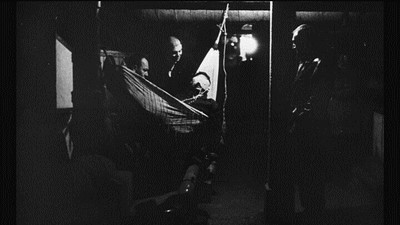
The repetition and variation of images is also employed in relation to four scenes which involve a futuristic looking hallway, the camp experimenters, and their subjects. Rather than simulating the character’s mental state, however, these sequences illustrate how the doctors enter the minds of their subjects…in a way that suggests the main character will go mad. After the initial entry into the underground world, the hallway motif appears four more times, though they are separated by intervening scenes (each of the following instances serves as transitions among these sequences). In the first example we have the experimenter, the hallway, and the madman joined by straight cuts (5’50”-6’00”).
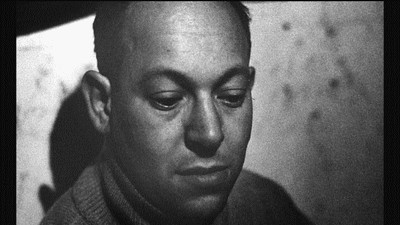
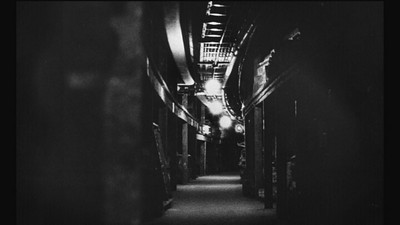
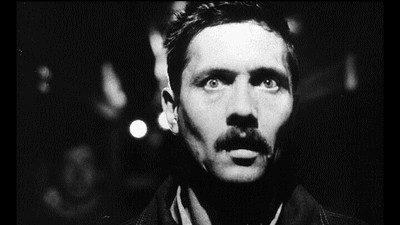
The second occurrence begins with one of the madmen, cross dissolves into a similar hallway, and cuts to the man with the glasses (6’30”-6’43”). The use of the (very slow) dissolve, which allows for the tunnel and the man’s head to be visible simultaneously, suggests the hallway is a metaphor for entry into the mind of a lunatic, and the cut to the man with the glasses suggests he can look into this state from across a safe barrier (i.e., the cut instead of a cross dissolve).
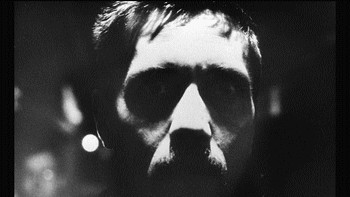
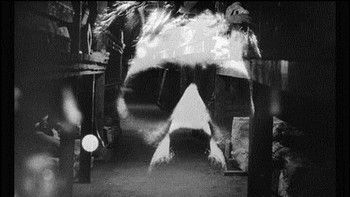
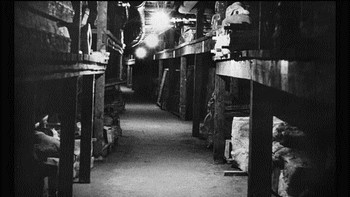
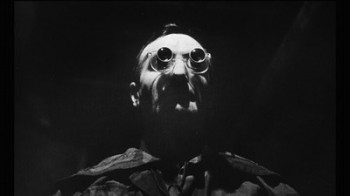
The third example cuts from the man with the glasses to the hallway, and then dissolves into the main character (7’20”-7’28”). As with the second case, the cross dissolve of the tunnel with the head evokes how the camp leaders are exploring or burrowing into the minds of their subjects, while observing this process from a guarded distance.
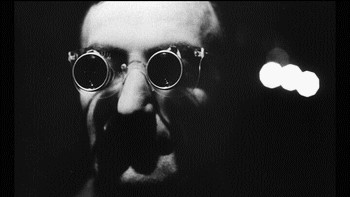
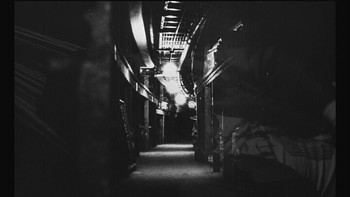
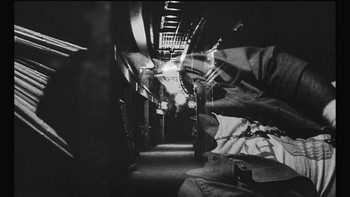
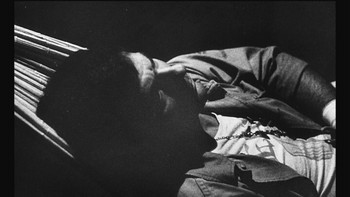
The fourth cuts from the experimenter, to the hallway, to the madman (8’08”-8’13”). This last shot from the hallway to the madman reiterates the association of the hallway with insanity, leaving the viewer with the suggestion that the main character will go mad.
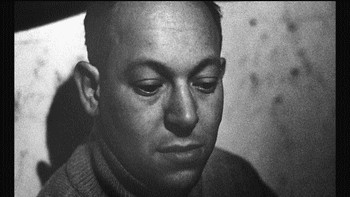
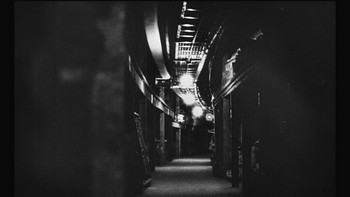
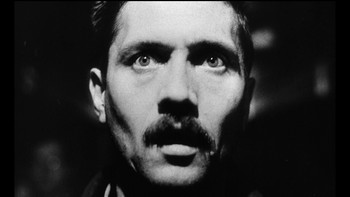
This use of editing illustrates how meaning in montage can be achieved not only in the direct connection between shots, but also by repeating variations on sequences at different points in a film. In the fourth occurrence of this shot exchange the first two shots in the sequence are identical to the first two shots in the first sequence, but the third shot of the same madman is subtly different, with the mad man being more centrally framed. Like in the earlier sequence with the man in the hammock, the barely perceptible variation forces the viewer into a disorienting sense of déjà vu.
The dangerous impact of the doctors is also expressed in a series of three shots which create the illusion that one of the doctors is violently twisting the main character’s head. After the man is given an injection, a sequence begins in which the camp leaders sit around his body and wait for the drug to take effect. On the sixteenth shot, the experimenter stands up to look over the man’s body as he responds to the drug. We are then shown three shots, each of which shows the doctor’s hand pressing on the eye goggles. The first is a frontal shot from medium distance. The second closer and to the left of the man’s head with the doctor’s hand entering from the upper right side of the frame. The third shot is similar to this, but taken from the right side of the patient’s head with the hand entering from the upper left. This sequence of three shots stands out for a number of reasons, which include the sudden urgency observable on the doctor’s faces. It is also a disorienting series of angles. While on the one hand the viewer understands that the man is stationary and it is the camera position which is moving to reveal different angles of the same subject, this series of successive angles creates the optical illusion that the hand is moving clockwise and is twisting the head out of place. The second shot changes angles but also moves closer in on the head, suggesting the hand is applying the increased pressure necessary to turn the head, an idea emphasized by the closer view we are provided of the man’s grimace. The cut to the third shot implies a smooth twist of the head after this initial application of pressure.
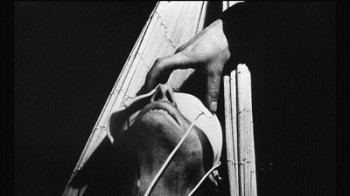
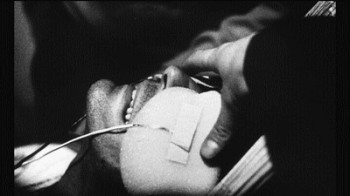
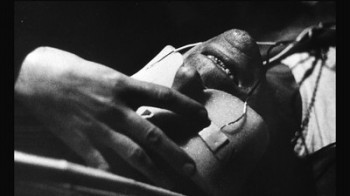
While this implicit head twist occurs on the objective, external level of the story, the series of angles it employs form a kind of trace which is repeated in the main character’s subjective memory state. This reminds the viewer of the scientist’s presence in and observation of his internal world where he interacts with the woman who forms the subject of his memory. After the head twist scene, he experiences his first series of recollections and is then sent back again to find the girl, which he does before losing her again. On his third trip into his memory, they interact and walk though a park. The violence of the above described head twist becomes associated with a sequence of angles which rotate around the subject. The first of these shots (occurring at 14’50”) starts on his right, and shows the two of them from behind. At the moment of this shot, the musical score introduces a darker and more sinister refrain, which indicates to the viewer that something may be amiss in this romantic stroll. The next shot is the reverse of this, taken from her side but maintaining their screen positions. These two angles repeat those of the final two of the head rotation, though from a further distance. The next shot is of a small girl looking off screen, presumably at the couple. This introduces the notion that the couple is being observed, an idea which indirectly recalls an awareness of the omnipresent doctors. The next shot is taken from in front of them, from his side with the man on the left, and occurs as the unsettling aspect of the music is repeated and amplified. This is followed by a frontal shot of the man and woman, and then a shot from her side, from the same angle as the original shot of the man. Traces of a previous scene are supplied through a certain succession of image angles, though this subtle sub-textual element of the editing obtains additional support through the use of sound and the suggestive insert of the little girl. While previously described scenes indicated how the repetition of images work to destabilize our sense of the character, in this passage it is the repetition of a series of camera angles which has a similar effect.
The subjective world of the main character’s memory state is also destabilized by an approach to editing that alternates between elements which are a part of the classical continuity editing system and those which are a violation of its desired smoothness. At 16’23” there is a scene that begins with the woman sitting on the bench sleeping. The man arrives and watches her sleep; she wakes up and they go for a short walk. This interplay first occurs as they sit at the bench, before getting up for a walk. After three shots in which she is alone on the bench is an image in which he is on the left side of the frame, approaching from a distance. In the next shot he has seated himself next to her, the camera now on a side angle closer to both of them. The next shot completes the shot/reverse shot procedure as we move to her side of the bench. Over these three shots, his position has been maintained on the left side of the screen, hers on the right, with the effect being that we have a clear sense of the overall space and are not confused as to their location.


Against this aspect, however, are a number of jump cuts in which the angle does not change significantly with regards to either direction or subject distance. One shot later, we see two successive images of them from the front, and then two from her side; in both of these pairings the camera moves only slightly and the effect is jarring.

This combination of stability and instability counterpoints the division between the apparent reality and desirability of this world with the notion that it is the doctors who are inducing this world, which they ultimately will not allow him to live in. While the shot/reverse shot pattern took on a sinister meaning in the scene described in the previous paragraph, other filmic elements which encouraged this reading (music and little girl, for example) are not present here, and the trace is by this point too mild to recall the doctors in this way.
The second and more pronounced way in which this sequence both employs and rejects the continuity editing system occurs after she wakes up and they begin their walk. After four shots of them walking towards the camera, him on the left and her the right, we see a medium close up on his side of the camera, followed by a close up of him from her side for a shot/reverse shot pattern. After a close frontal shot of her comes a medium image of both of them, only with him on the right and her on the left. While this new position suggests an alteration of time, the sequence visually completes itself over the next four shots as though they are continuing the same walk, with the background location and clothing apparently unchanged. This alteration is emphasized by a musical score that softens and a voice-over that states: “Is it another day? He doesn’t know.”

This alteration of their placements provides the viewer with knowledge that an alteration has occurred, even if the voice-over does not know. Under the continuity editing system, switching the placement of characters between shots, referred to as cutting across the 180 degree axis, would be considered a cardinal error because it would (theoretically, although not always in practise) disorient and confuse the viewer. This is, however, exactly the motivation behind this alteration and the viewer’s response; the sensing of an odd mixture of continuity and discontinuity is an effective way of evoking the mood of the man’s visits with the woman and the world in which they unfold. An effective way to provide a sense of confusion is to subvert a system that is designed to provide clarity, since the destabilization will occur within a context in which people expect stabilization. From this perspective, the continuity approach to editing has, ironically, furnished Marker with an excellent means to disorient the viewer.
This essay has sought to outline how the editing of La Jetée functions to create a sense of instability in relation to the viewer’s psychological understanding of the main character’s process of recollection, the volatile and deadly relation between the doctors and their main subject, and the contested ‘reality’ of this character’s subjective world. One remarkable aspect regarding the way in which Marker has achieved each of these effects is that they operate on the level of subtext, which interacts with ideas more explicitly stated. It is obvious, for example, that the doctors are entering the mind of their subjects, though it may not be immediately clear that the patterned use of corridors suggest the dangerous consequence of this penetration. Similarly, we know the main character is involved in recollections, but may not consciously realize how we have been manipulated into engaging in a similar process. This interplay between the overt and the subtle, between the explicit and implicit, is one of the most fascinating elements of the film, to say nothing of its central role in the creation of all compelling art.
PS: Time codes taken from the Criterion DVD release.


